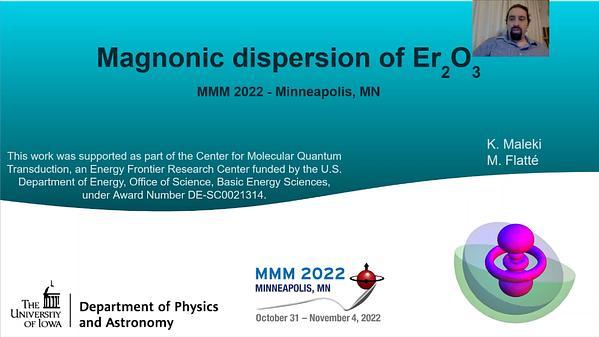Would you like to see your presentation here, made available to a global audience of researchers?
Add your own presentation or have us affordably record your next conference.
(1)National Physical Laboratory, Teddington, Middlesex, United Kingdom, (2)Instituto de Ciencia de Materiales de Madrid (ICMM-CSIC), Madrid, Spain, (3)Czech Metrology Institute, Brno,
Czechia, (4)Physikalisch-Technische Bundesanstalt, Braunschweig, Germany, (5)Instituto de Engenharia de Sistemas e Computadores (INESC-MN), Lisbon, Portugal, (6)University of Leeds,
Leeds, United Kingdom, (7)Istituto Nazionale di Ricerca Metrologica, Turin, Italy, (8)Sheffield Hallam University, Sheffield, United Kingdom
Abstract Body:
The interplay between thermal gradients and magnetic topological soliton systems represents an exciting frontier in the understanding of novel thermo-magnetic
interactions at the nanoscale 1,2. Thermally driven non-equilibrium spin polarised charge currents and their interaction with the non-trivial topology of skyrmions is central in
understanding phenomena such as the topological Nernst effect in chiral magnetic systems within the context of spin caloritronics 3.
In this talk we will address aspects of scanning thermoelectric microscopy (SThEM), Fig 1 (a), where, we will present a novel thermal scanning probe technique that allows us to locally
investigate the thermoelectric response from the magnetic domain structure in YIG 4 to nanomagnetic topological solitons: domain-walls and skyrmions. By building up a localised
picture of the resulting spatially resolved electric field we can build an understanding of the underlying spin configuration.
We will discuss experimental and modelling results which elucidate to the local response from a pinned domain wall system in an ultra-thin magnetic layer, Fig 1(b). We demonstrate that
the domain-wall introduces an additional contribution to the total measured signal, Fig 1(c), which can only arise if we assume a Néel type domain-wall . We will also report on local
thermoelectric measurements of skyrmionic systems where we have investigated a set of device structures based on chiral magnetic multilayers, Fig 1(d).
Image Caption:
Fig. 1. (a) Schematic representation of the sThEM measurement setup used in this work showing the heated AFM probe used to apply the local thermal gradient. The electric field is probed
along the device (endif--> and the integrated response is mapped pixelwise. (b-c) sThEM micrographs for saturated and domain wall pinned configurations, respectively. (d) sThEM
micrograph of a skyrmion nucleated in a chiral magnetic multilayer.
References:
1 Jakub Zázvorka, et al, Thermal skyrmion diffusion used in a reshuffler device Nature Nanotechnology, 14, 658–661 (2019).
2 Zidong Wang et al, Thermal generation, manipulation and thermoelectric detection of skyrmions, Nature Electronics, 3, 672–679 (2020).
3 Alexander Fernández Scarioni, Craig Barton, et al , Thermoelectric Signature of Individual Skyrmions, Phys. Rev. Lett. 126, 077202, (2021).
4 Alessandro Sola, Craig Barton, et al, Phys. Rev. Applied 14, 034056, (2020).

